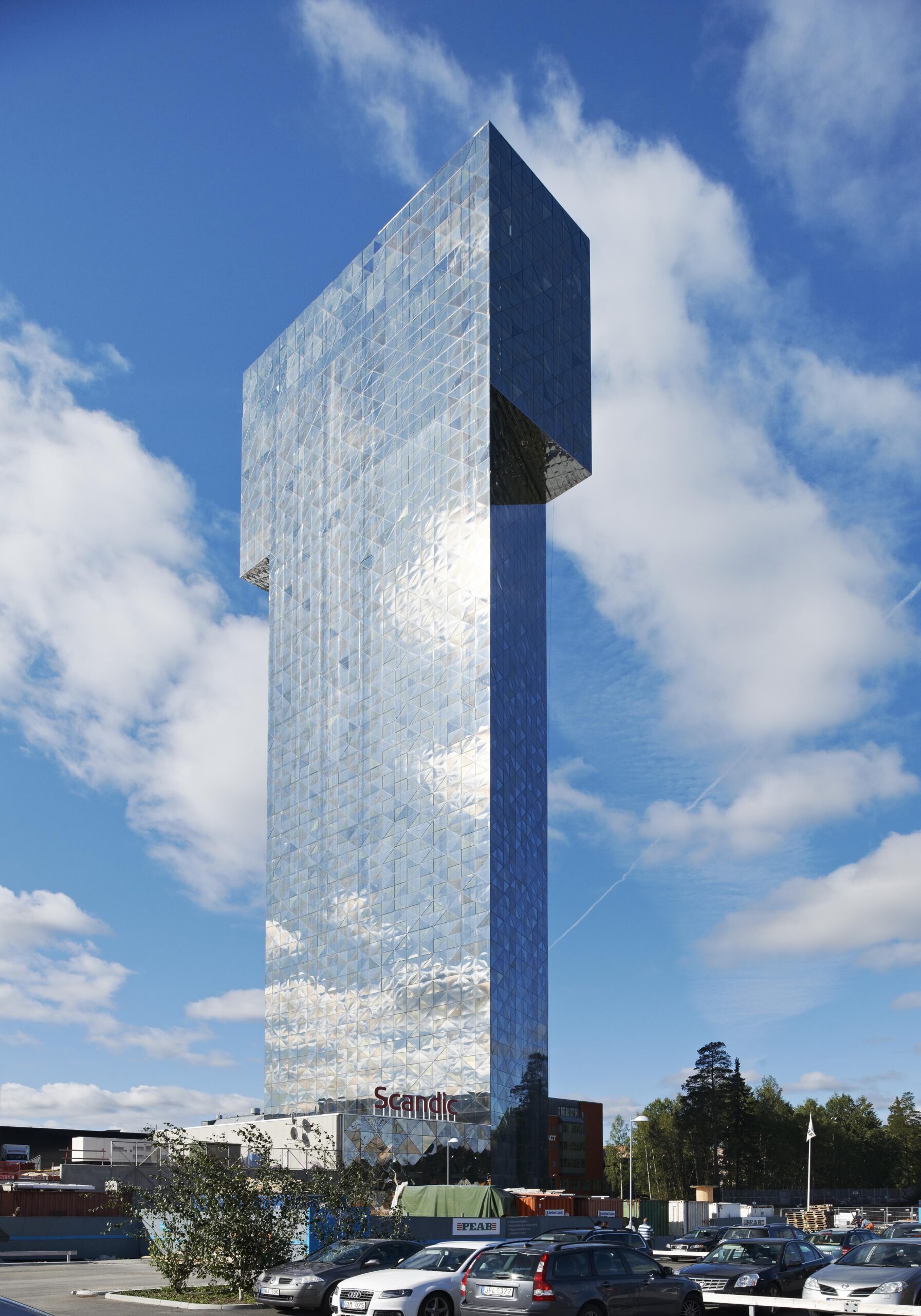The Tivoli Hjørnet is the newest architectural edition to Copenhagen’s world-famous Tivoli Gardens. Tivoli has been around for 175 years but is constantly evolving.
The garden is the city’s most-visited site. The project provides significant new amenities to visitors and, perhaps most importantly, serves as an extension of Danish design culture.
Glassense has made the outer single pane. Which is beautifully curved creating a seemingly seamless skin providing unity to the façade. As well as protection for the sunscreen. The inner façade is in large extent modularized. Only the insulated glass panes are mounted on site, due to that there are no vertical profiles in the glass joints.
For this project we have produced single laminated and tempered low-iron glasses and IGU-s. Low-iron glass is an high transparent glass with light transmittance of 91% or more. This low level of iron removes the greenish-blue tint that can be seen especially on larger and thicker sizes of glass.

The high-performance glazed skin of the enveloping glass wall provides solar shading as well as insulation for the interior. An electronically controlled shading system captures the nuances of shifting light conditions to enhance the experience for both visitors and pedestrians.
On the street side, an undulating glass wall offers a memorable experience for passers-by. The transparency of the glass makes the animation and spirit of Tivoli palpable, while green roofs bring the garden to the street edge.
About Tivoli Garden
With one foot planted in the past and one in the future, this project engages the history of Copenhagen’s extraordinary Tivoli Garden. Also adds to its storied legacy. On the garden side, the building’s terracotta terraces weave together and step back, beneath the Copenhagen sky.
At 8500 square meters, the new building contains a hotel, restaurants, and retail space. Its key architectural element evokes the moat and fortifications that once ringed the city and remain imprinted on the garden’s layout.
The garden, originally founded in 1844 on the city’s perimeter, was envisioned as a place for amusement, culture, and recreation. The Hjørnet project resonates with the garden’s dualities: traditional and experimental, bucolic and urban, contemplative and entertaining.

